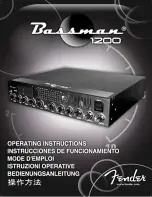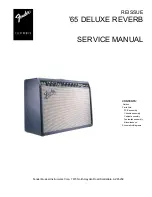Reviews:
No comments
Related manuals for GS100

BM25
Brand: Oldham Pages: 43

SINEAX AM2000
Brand: Camille Bauer Pages: 62

MH450
Brand: Macnaught Pages: 4

Bassman 1200
Brand: Fender Pages: 20

65 Deluxe Reverb
Brand: Fender Pages: 12

Clarity M
Brand: TC Electronic Pages: 20

HF Scientific AccUView LED Ex
Brand: Watts Pages: 2

DUSTHUNTER C200
Brand: SICK Pages: 126

TPMS1209C01
Brand: S&T Pages: 23

DPG1000AD
Brand: Omega Pages: 4

RLVBTOUCH-M
Brand: Racelogic Pages: 15

Multimar 25 EWR
Brand: Mahr Pages: 20

AutoSigma 3000 DL
Brand: GE Pages: 68

OIL INTENSIFIER SYSTEM
Brand: DH Instruments Pages: 2

WTW Oxi 3205
Brand: Xylem Pages: 44

M12 3632-20
Brand: Milwaukee Pages: 20

EVOM
Brand: WPI Pages: 32

MI 806
Brand: Milwaukee Pages: 2

















